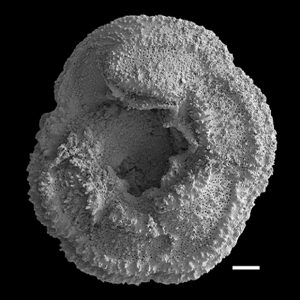Using Seashells to Monitor Pollution
January 15, 2021
Natural Sciences
Green Prophet — BGU’s Prof. Sigal Abramovich has a mission. She wants to convince global regulators to include regular monitoring of the geochemistry of a certain type of teeny tiny shell marine organisms (called forams) as an indicator of pollution in the ocean.
A member of BGU’s Department of Earth and Environmental Sciences as well as the head of its Laboratory for Foraminiferal Research, Prof. Abramovich is studying the effects of desalination pollution, like heavy metals on the marine environment.

Prof. Sigal Abramovich
The tiny shells, as small as a grain of sand, reveal more than jewel-like characteristics under a microscope. Looking at the tiny shells or foraminifera, “we have been able to quantify the amounts of heavy metals pollution injected by the brine discharge from desalination plants across the Mediterranean coast of Israel,” explains Prof. Abramovich.
“Our research demonstrates the potential of using heavy metals anomalies in foraminiferal shells as a tool for detecting the industrial footprint of coastal facilities including areas that were considered clean nature reserves.”
What are forams?

Foraminifera
Foraminifera (forams for short) are single-celled organisms (protists) with shells or tests (a technical term for internal shells). They have been abundant fossils for the last 540 million years.
In a series of studies over the past three years, Abramovich and her team from Ben-Gurion University, The Israel Oceanographic and Limnological Research Institute and the Geological Survey of Israel have found that foraminifera found on the ocean floor store evidence of the pollution around them within their shell formation.
Foraminifera are unicellular organisms that produce calcite shells directly from seawater. They are among the most ancient and abundant fossils and their calcite shells accumulate in mass quantities in oceanic sediments and thus become one of the most important components of sedimentary (carbonate) rocks.
Their shells record the chemical and physical properties of their seawater, providing the basis for most climate research. This is the reason why foraminifera are considered one of the most important archives of ancient and modern oceans.
Coastal infrastructure makes the marine ecosystem susceptible to incidental industrial metal introduction that, even if relatively short-term, could stress local ecosystems or affect the water quality. Traditional monitoring methods are insensitive to these events, and thus better and more comprehensive monitoring methods are required.
Prof. Abramovich is working with an international network of oceanographers to encourage countries around the world to adopt regular foraminifera monitoring based on the methods developed in her lab.
Her research has been supported by the Israeli Ministry of Science through the BMBF-MOST program, by a GIF (German-Israeli Foundation for Scientific Research and Development) grant and the Israel Science Foundation.
Read more on greenprophet.com >>






